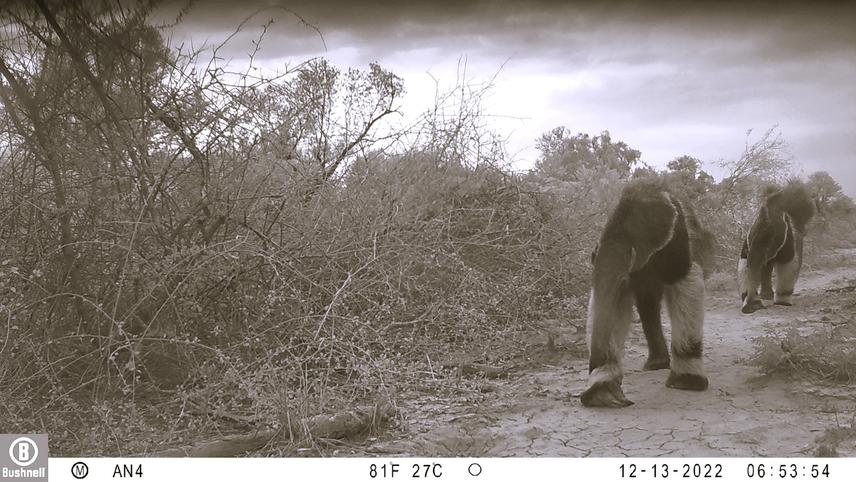Sofía Nanni
Other projects
26 Apr 2012
The Effects of Agriculture Modernization for Ecosystem Services in a Subtropical Watershed I
22 Jan 2016
The Effects of Agriculture Modernization for Ecosystem Services in a Subtropical Watershed II
18 Apr 2018
Influence of Humans and Domestic Animals on Vertebrate Trophic Cascades in Forest Remnants of the Argentine Chaco: Implications for their Long-Term Conservation
This project focuses on promoting coexistence between rural communities and wildlife in a Key Biodiversity Area in Argentina’s Dry Chaco through a holistic approach. The region holds high social-ecological value and is home to species such as the puma, Chacoan peccary, collared peccary, and giant anteater, among many others. At the same time, many families depend on livestock and forest resources for their livelihoods, and livestock losses due to predation can severely impact their well-being.

Two giant anteaters recorded by our camera-traps in the area. © Sofia Nanni.
This initiative builds on more than three years of work with local families and neighbouring farms. Earlier efforts helped identify key challenges and test interventions to reduce attacks on livestock by carnivores, such as protective leather collars. Through these experiences, the team established strong relationships with local stakeholders and laid a foundation of trust and collaboration.
The current project expands these efforts by combining ecological monitoring, education, and community-based planning to continue developing interventions to mitigate carnivore attacks on livestock during the most critical season. A key component involves the use of agent-based models to better understand how different factors—such as livestock numbers, forage availability, seasonal changes, and predator behaviour—interact to influence predation risk. These insights will help design targeted, community-supported strategies to reduce losses and improve coexistence.
Other activities include participatory camera-trap monitoring to assess the status of target species, educational workshops in local schools to foster awareness and positive attitudes towards wildlife, and the development of a wildlife encounter protocol to promote safe interactions and discourage the keeping of wild animals as pets.
By integrating science with local knowledge and priorities, the project aims to deliver practical solutions that benefit both biodiversity and rural livelihoods. In the long term, it seeks to position the area as a model for coexistence in shared landscapes.